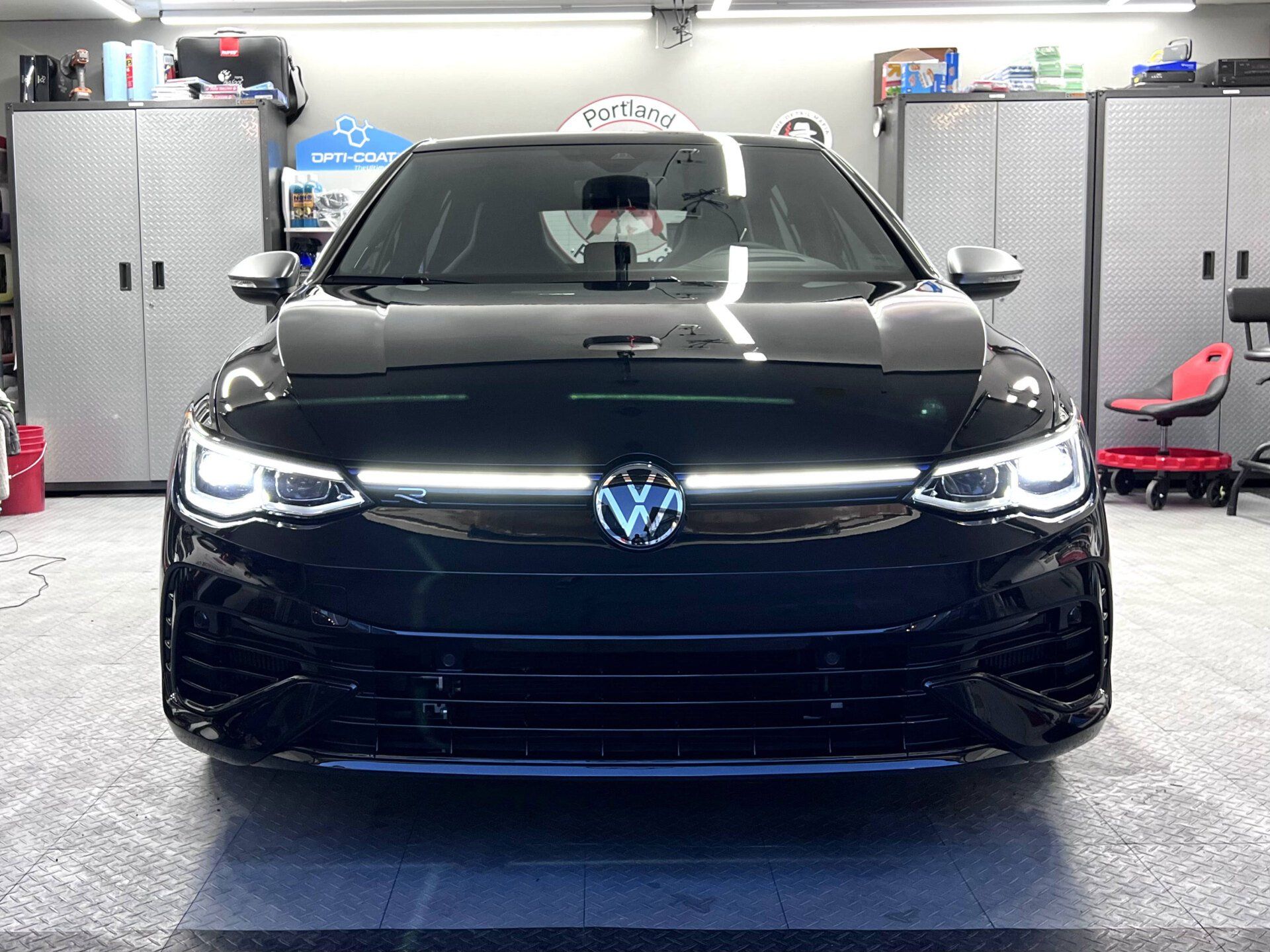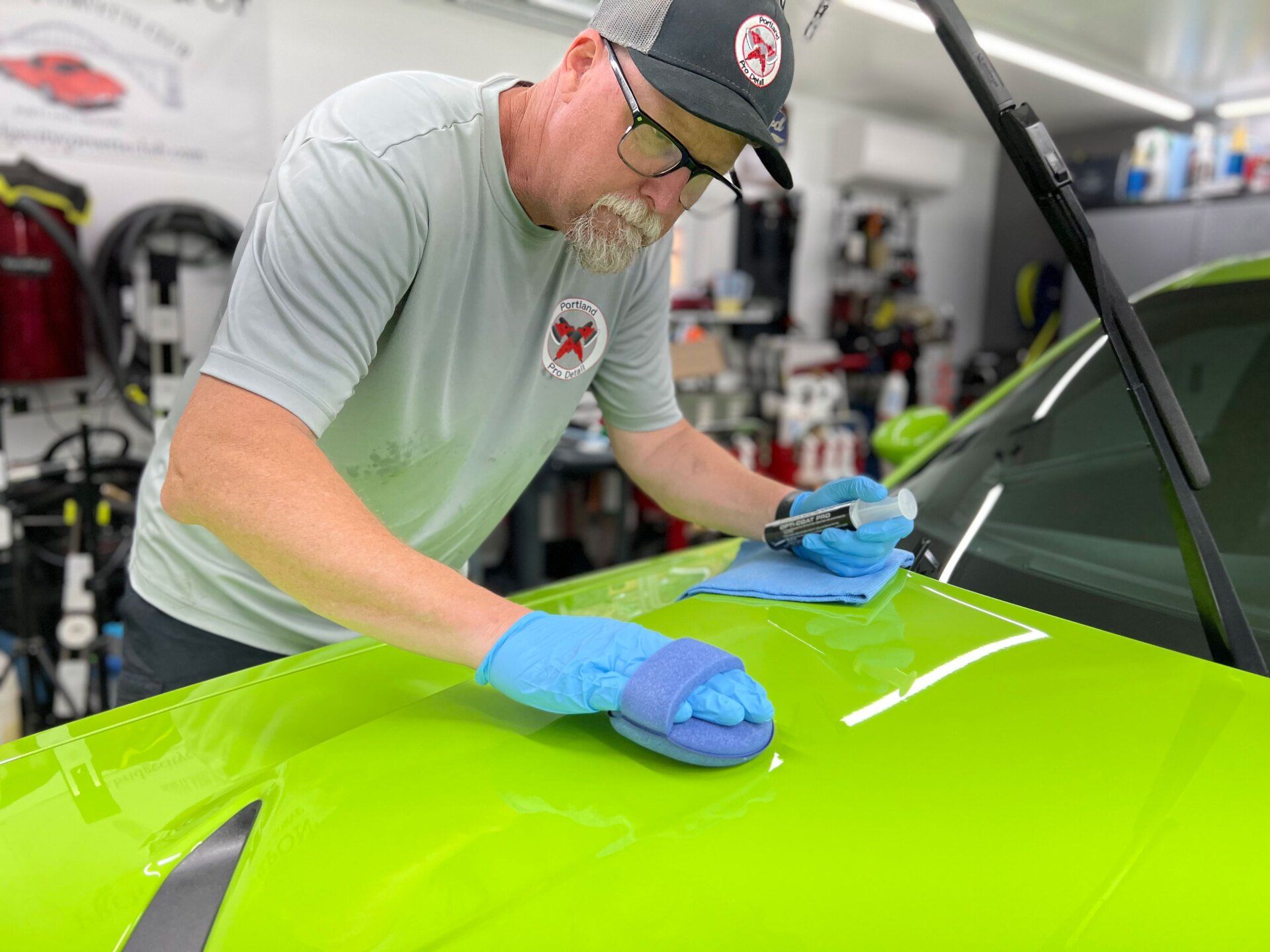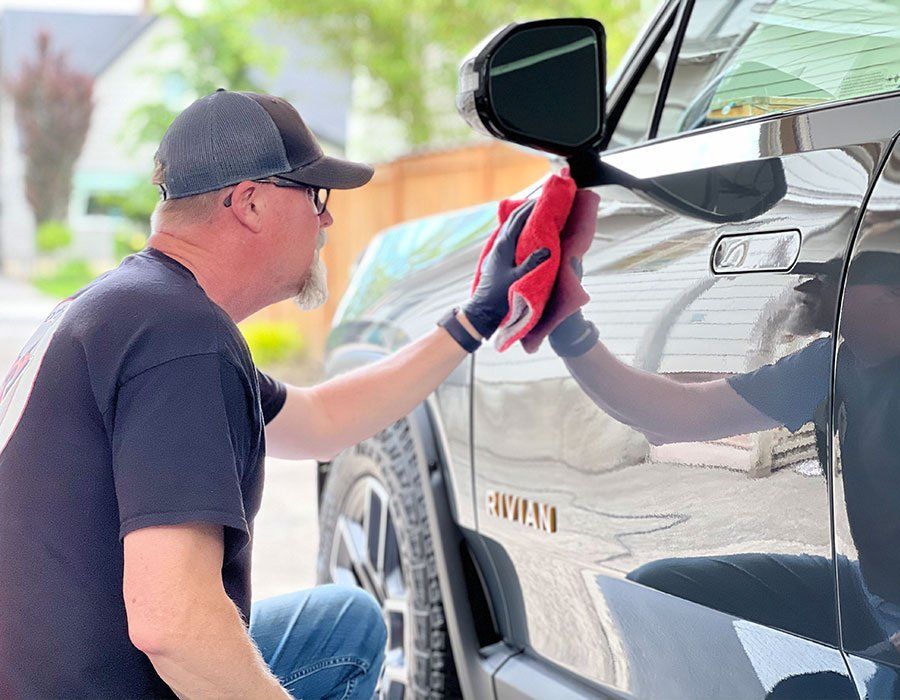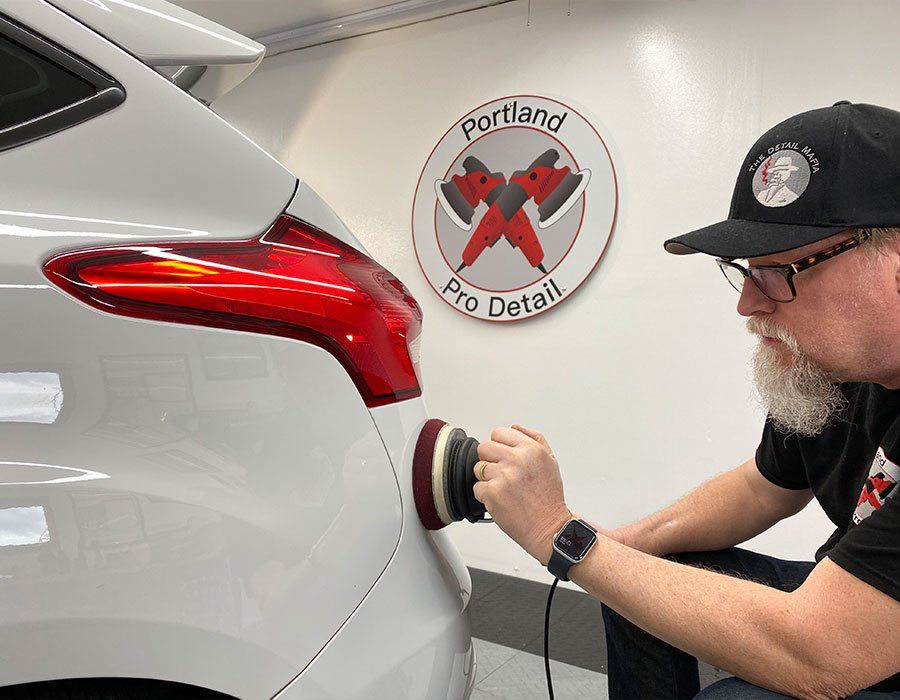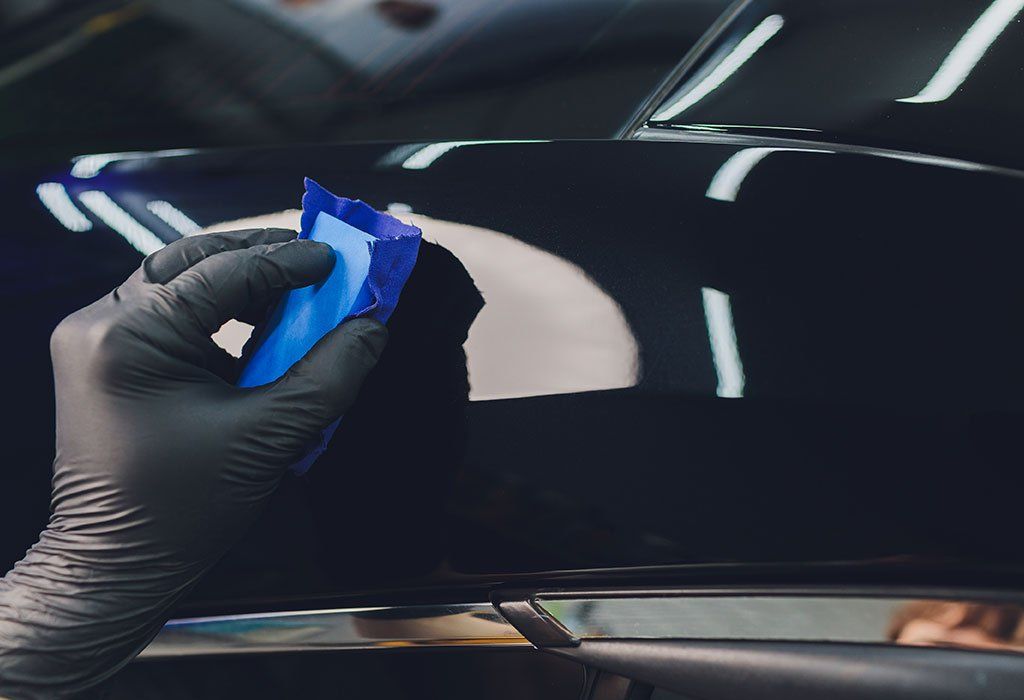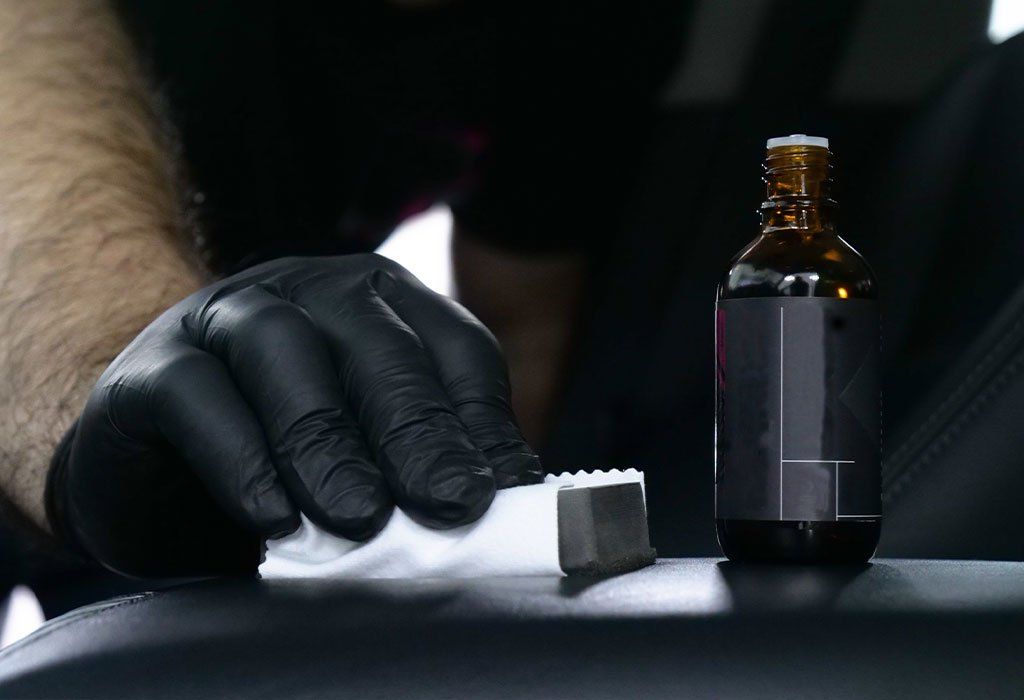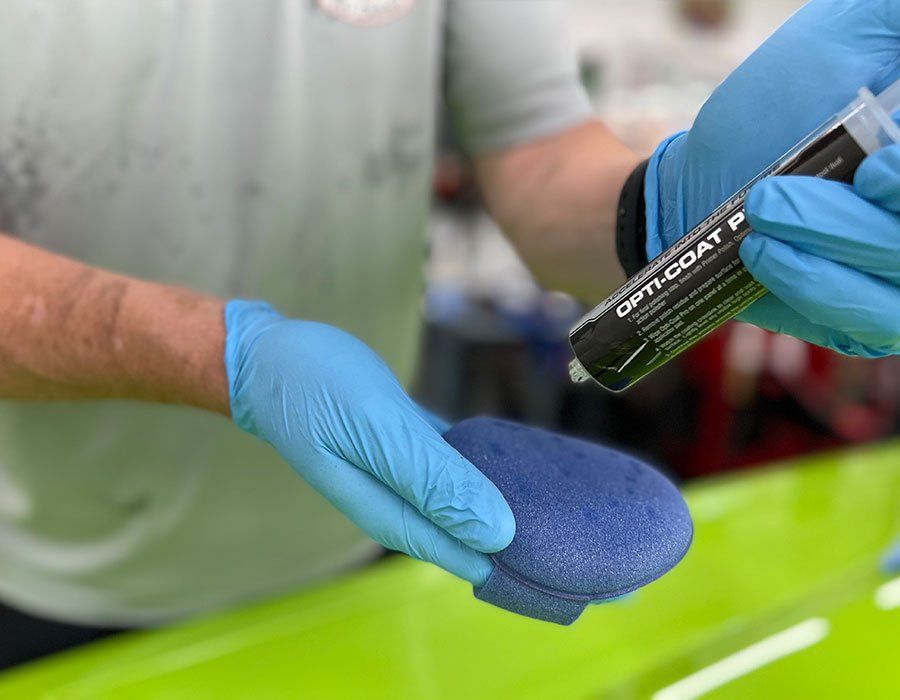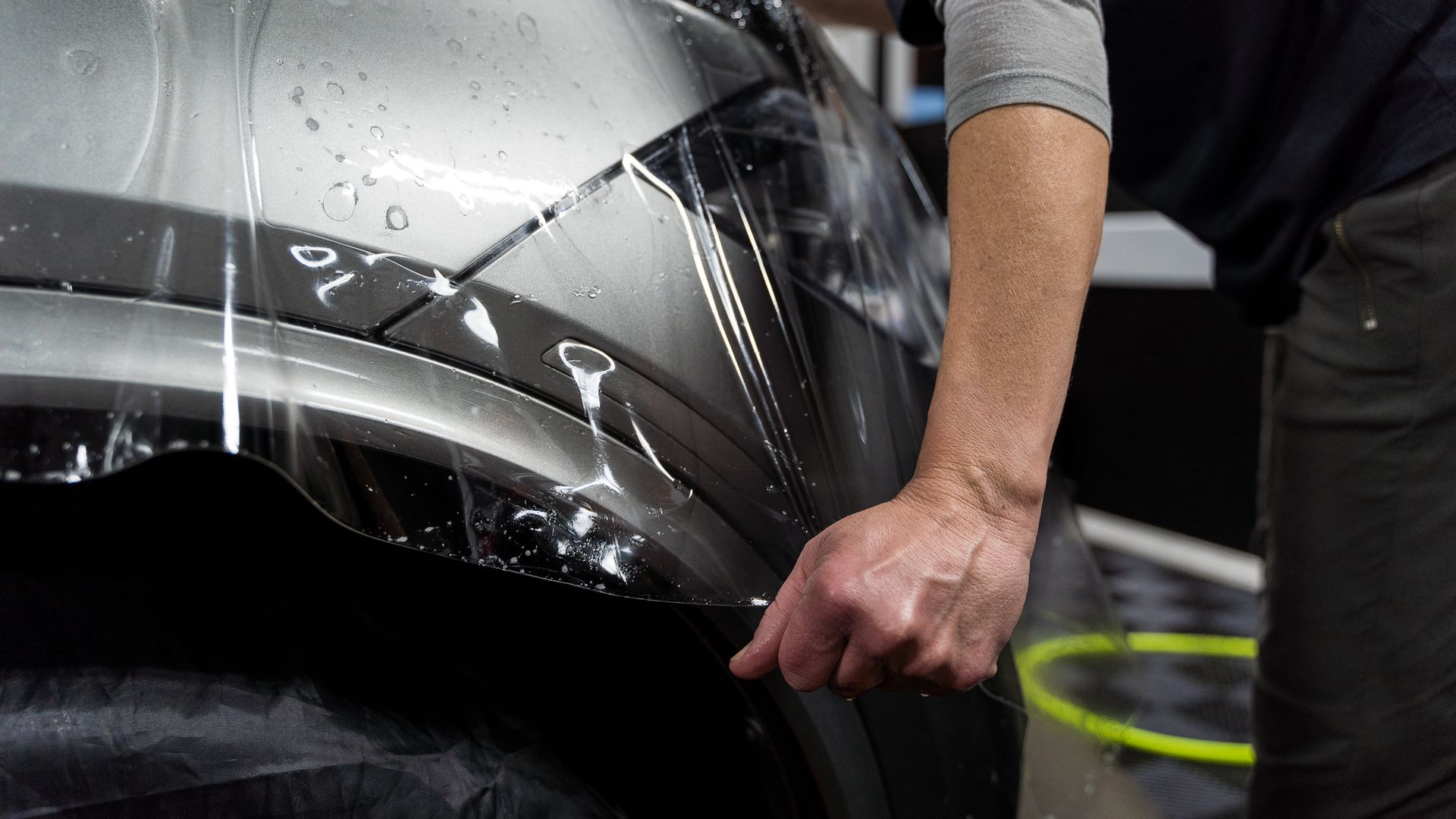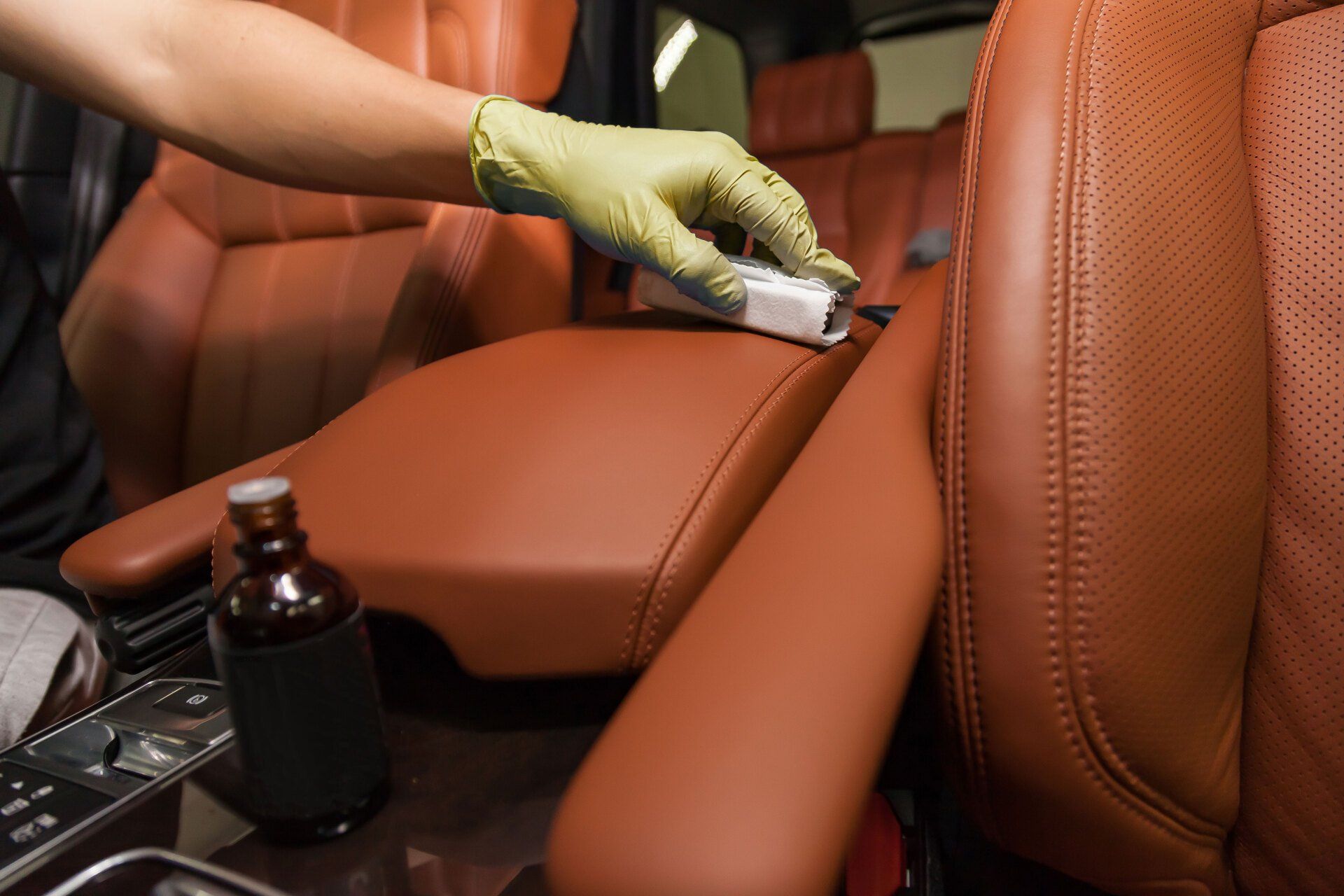Benefits of Ceramic Coating for Your Car: Protecting Your Paint with Long-Lasting Shine
CALL (503) 444-7415
A ceramic coating offers powerful protection for your car. This liquid shield bonds with your car's paint, creating a strong layer that protects against harm from things like dirt or sunlight. But it doesn't just guard; it also beautifies, enhancing the glow and shine of your vehicle's color. So, you get to drive a car that not only lasts longer but also looks better. Imagine cruising down the road in a vehicle that gleams brightly under the sun—incredible, isn't it?
Ceramic coating offers a range of benefits, including protection from UV rays and chemical stains, ease of cleaning due to its hydrophobic nature, and a glossy finish that enhances the car's original paint job. It adds value to the car in the long run and makes maintenance less tedious. However, it should not be seen as a one-stop solution for all paint worries, and regular maintenance is essential for retaining the look of the car.
Unveiling Ceramic Coating
So, what exactly is a ceramic coating? It sounds like something highly technical, but it's actually quite straightforward. Imagine it as a protective skin for your car. When applied, it chemically bonds to the surface of your vehicle, creating a protective layer that acts as a barrier between your car’s paint and the outside world. This layer isn’t visible, but its effects certainly are. Here are some benefits of ceramic coating:
- Protection from Environmental Contaminants: From bird droppings to bug splatter, tree sap, and industrial fallout, ceramic coating provides a protective shield against these contaminants that can lead to permanent damage if left unattended.
- UV Ray Protection: Just as sunscreen protects our skin from harmful UV rays, ceramic coating acts as an invisible armor against the sun’s damaging rays. This helps prevent the original color of your car from fading over time.
- Enhanced Gloss: One of the most visually satisfying advantages of ceramic coating is its ability to enhance the gloss and shine of your car's paint. This lustrous finish gives your vehicle that coveted "brand-new" look that's hard to achieve with traditional waxes and sealants.
In essence, ceramic coatings are created using nanotechnology, which allows the tiny particles found in these solutions to fill in all the microscopic pits and valleys present on your car’s clear coat. When these particles bond with the clear coat, they create a super-smooth surface that repels water, preventing contaminants from sticking to your car's paint and causing damage. Imagine this nanotechnology acting like an invisible force field around your vehicle, protecting it from everyday exposure to the elements. The water-repelling properties mean that when it rains or you wash your car, water beads up and rolls off more easily, taking dirt and grime with it.
So why choose ceramic coating over traditional waxes or sealants? Some may argue that traditional waxing and sealant products have been used for years with success. While this is true, ceramic coatings offer unrivaled durability and longevity compared to traditional methods. With a single application potentially lasting years as opposed to months, it's a worthwhile investment in preserving the appearance and value of your vehicle.
The Magic of Ceramic Coating Benefits
Ceramic coating offers more than just a shield from the elements. When you apply ceramic coating to your car, you're not just protecting its paint; you're giving it a lasting shine and an alluring gloss. Here are some of the benefits you can expect from a ceramic coating application:
Protection from UV Rays
You know how the sun can be harsh on your skin, causing damage over time? Well, your car's paint job can suffer a similar fate. The ultraviolet (UV) rays from the sun can cause oxidation and fade the paint on your car. Not to mention, it can accelerate wear and tear on the exterior. But with a ceramic coating, it acts as a shield against these UV rays, preventing them from penetrating the layers of paint and preserving that fresh-off-the-lot look for longer periods.
Hydrophobic Properties
Imagine having an invisible force field that repels all things dirty and wet away from your car's exterior. That's basically what ceramic coating does. The hydrophobic nature of a ceramic coating makes water bead and roll off, essentially carrying dirt and grime with it. This not only keeps your car cleaner for longer but also makes washing it easier—say goodbye to stubborn spots and streaks!
Enhanced Gloss and Shine
If there's one thing every car owner loves, it's a sleek, glossy finish that turns heads on the road. A ceramic coating doesn't just protect; it also enhances. By adding an extra layer of depth to your car's existing paint job, this coating gives it a lustrous shine reminiscent of a brand-new vehicle right out of the showroom. The glossy finish not only catches eyes but also adds value to your car. It's like putting on a fine piece of jewelry that not only protects but also accentuates the beauty beneath—giving your vehicle that unmistakable aura of luxurious appeal.
With these benefits in mind, it's no wonder why ceramic coating is such an appealing choice for those looking to preserve their vehicle's appearance and value.
UV and Heat: No Threat to Your Car
Picture this: your car parked in the sun, its sleek paint job glistening under the bright daylight. But did you know that while the sun's rays make the car look good, they can also be damaging? UV rays are one of the biggest threats to your car's exterior, as they can cause the paint to fade and lose its luster over time. This is where ceramic coating steps in as a superhero for your car, armed with the power of protection. Ceramic coatings form a barrier against UV-induced oxidation, preventing those harmful rays from causing long-term damage to your car's paint. By blocking out the UV radiation, they maintain your car's aesthetic appeal and ensure that you're not left with a dull, faded exterior. It's like having a shield that keeps your car looking vibrant, even after years of exposure to sunlight.
But that's not all! Ceramic coatings offer another layer of defense against the threat of heat. This constant exposure to high temperatures can lead to paint fading, affecting not just the appearance but also the overall resale value of your car. Here's where ceramic coating works its magic once again. By providing thermal insulation, it helps reduce the surface temperature of the car paint even when exposed to intense heat. This means that your car is better equipped to withstand prolonged periods of sun exposure without succumbing to the damaging effects of heat-induced paint deterioration.
It's fascinating how a simple protective layer can make such a significant difference in preserving your car's appearance and value over time. Let's put it this way: Just like how sunscreen shields your skin from UV rays and prevents sunburn, ceramic coating shields your car's paint from UV rays and prevents color fading. With this advanced protection, you won’t have to worry about leaving your vehicle parked in the sun or dealing with unsightly color changes due to constant exposure.
Repelling Dirt and Grime
A ceramic coating forms an additional layer on top of your car’s clear coat, making it much harder for dirt or grime to stick to it. This extra protection comes from the chemical structure of the ceramic coating. It creates a hardened shell over the paint, acting as a barrier against dirt, grime, and stains. When other dirt or grime come into contact with your car, they are less likely to leave stains, thanks to this durable shield.
The hydrophobic nature of ceramic coating further enhances its effectiveness in repelling dirt and grime. When water comes into contact with a hydrophobic surface, it beads up and rolls off, taking along any dirt particles. So, even if you take your car for a spin in unpredictable weather, it's easier to keep it looking clean without frequent washes. It's like having a protective forcefield around your car that defends it against the elements—quite similar to how an umbrella shelters you from the rain.
This ability to repel dirt doesn't just keep your car looking clean; it also plays a role in maintaining the condition of the paint surface. When dirt sticks to your car and isn’t cleaned promptly, it can lead to scratches and discoloration over time. With ceramic coating, the build-up of grime is minimized, preserving the integrity of your car's finish. With the ceramic coating’s knack for repelling dirt and grime, maintaining the beautiful exterior of your car becomes significantly easier.
Boosting Your Car's Paint Durability
Beyond just adding shine to your car's paint job, ceramic coating creates a robust barrier between your car's surface and various environmental threats. This layer acts as a shield, safeguarding your car against harmful contaminants like bird droppings, tree sap, road salts, insect splatter, and pollutants in the air that can cause substantial damage to your car's paint over time. Imagine it as a protective force field around your precious car, shielding it from the everyday wear and tear caused by exposure to the elements. This means that even after driving through dusty roads or parking under trees, your car's paint job remains unscathed.
Additionally, the resilient ceramic coating layer aids in preventing paint fading or oxidization brought on by extended exposure to harmful UV rays. It acts as a shield against the sun. Regular exposure to sunlight can lead to a dull and lackluster appearance of the car's paint job over time, but with ceramic coating, you're providing an extra level of protection against this. In addition, ceramic coating offers higher resistance to chemical stains from acidic contaminants, such as acids present in bird droppings or hard water spots caused by mineral deposits in rainwater. This means that not only does it repel these contaminants effectively, but it also makes it easier to clean them off without damaging your car's surface in the process.
It's important to understand that while ceramic coatings do provide an additional layer of protection for your car's paintwork, they are not impervious to damage. They won't withstand direct impact or abrasions like a clear bra or paint protection film might. However, they do offer solid resistance against environmental hazards and help maintain the pristine appearance of your vehicle for longer periods of time. By providing a fortified shield against environmental contaminants, ceramic coating ensures that your car maintains its original luster and remains well-protected from common sources of wear and tear, ultimately extending the life of its paint job.
Assessing the Value: Ceramic Coating Cost Analysis
The decision to invest in a ceramic coating for your car is crucial, especially when considering the upfront cost and long-term benefits. Initially, the price might seem high, but it's essential to weigh this against the long-term protection and reduced maintenance needs. Let's break down the costs involved. The price of professional-grade ceramic coatings can range from $500 to $3,000, depending on factors such as the size of the vehicle, paint color, and age. The question then becomes: Is this investment worth it?
It certainly helps to consider the long-term benefits. While a ceramic coating may require an initial financial investment, it offers robust and long-lasting protection for your vehicle's exterior. This protective layer resists UV damage, dirt, bird droppings, and other environmental contaminants and provides hydrophobic properties. This means that not only will your car look newer for longer, but you'll also spend less time and money on maintenance. With a ceramic coating in place, the need for waxing or frequent detailing diminishes significantly. By minimizing these maintenance requirements, you're saving both time and money over the life of your vehicle. Additionally, considering the potential reduction in repair costs due to protection against environmental damage, the upfront cost begins to seem more justified.
While the initial cost of a ceramic coating might seem like a significant financial commitment, it's essential to evaluate it through the lens of long-term preservation and reduced maintenance needs. The balance between upfront expenses and long-term benefits ultimately defines whether this investment in preserving your car's exterior is indeed valuable. So while the initial expense may appear steep, the long-term advantages in terms of preservation and reduced maintenance shouldn't be underestimated.
Matchless Ceramic Coating Service in Portland, OR
Are you tired of spending endless hours trying to maintain the shine on your car, only to have it fade away after a few weeks? Say goodbye to those frustrations and hello to long-lasting brilliance with Portland Pro Detail's
matchless ceramic coating service! Situated in the heart of Portland, Oregon, our team specializes in providing top-notch protection for your vehicle's paintwork. Our ceramic coating not only enhances the aesthetic appeal but also acts as a shield against the elements, ensuring that your car stays looking its best for years to come. Don't settle for subpar results; experience the unmatched quality of our ceramic coating service and give your car the protection it deserves. Schedule your appointment today or call us at
(503) 444-7415 and let us help you preserve the beauty of your ride!
Portland Pro Detail Blog
